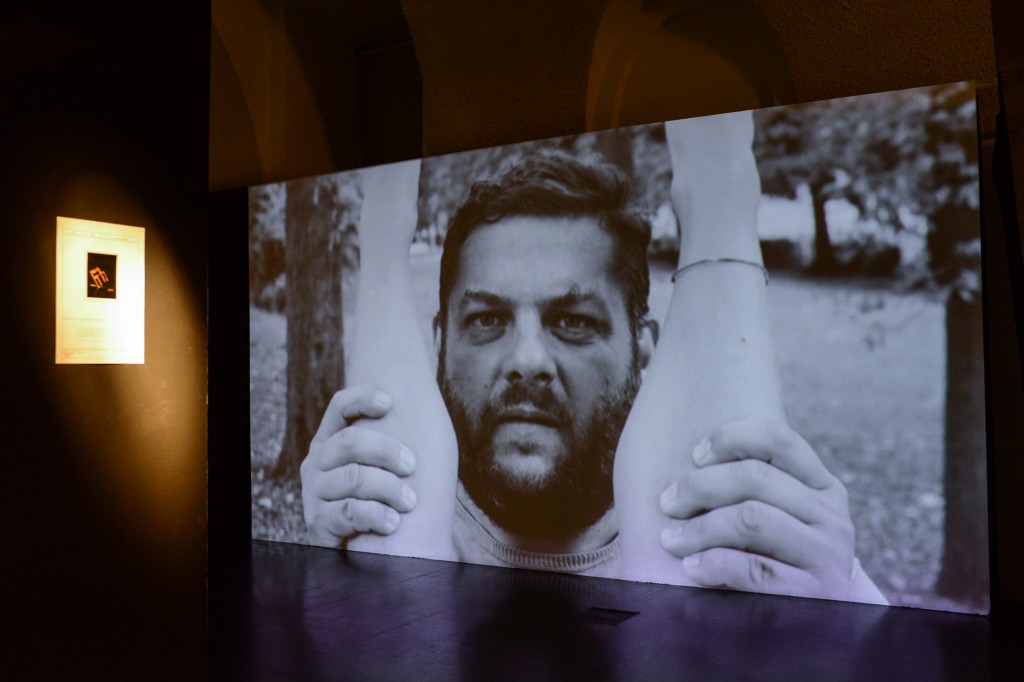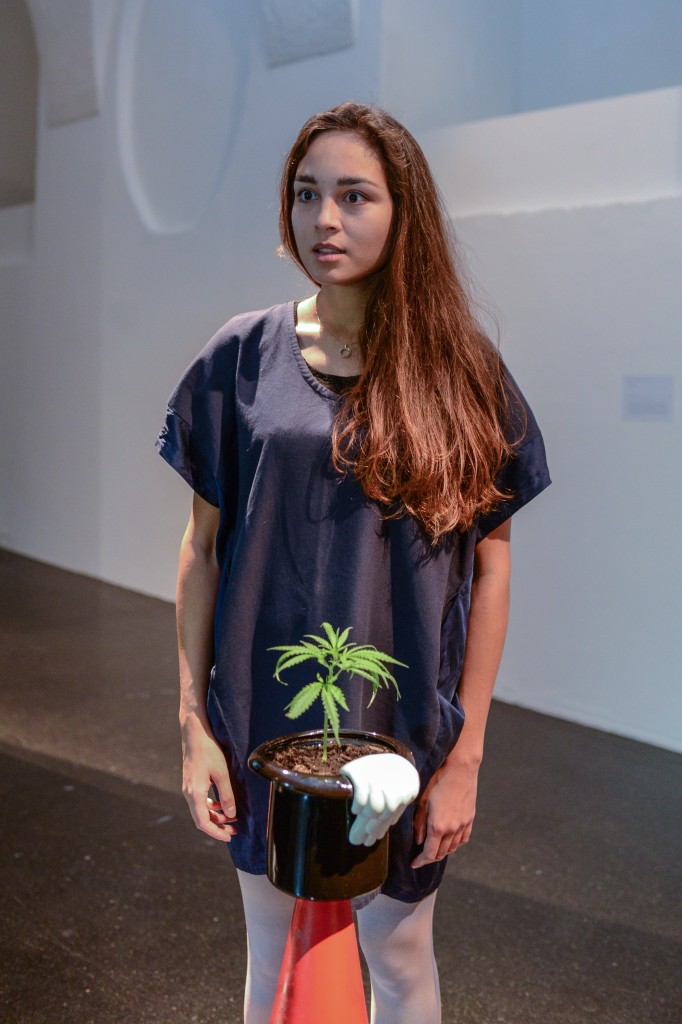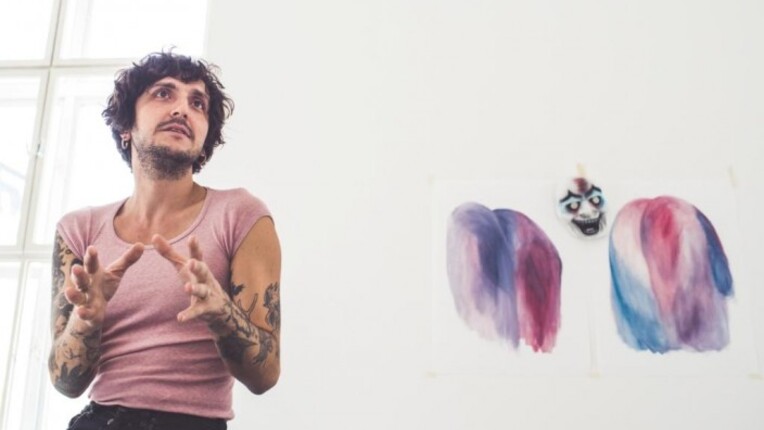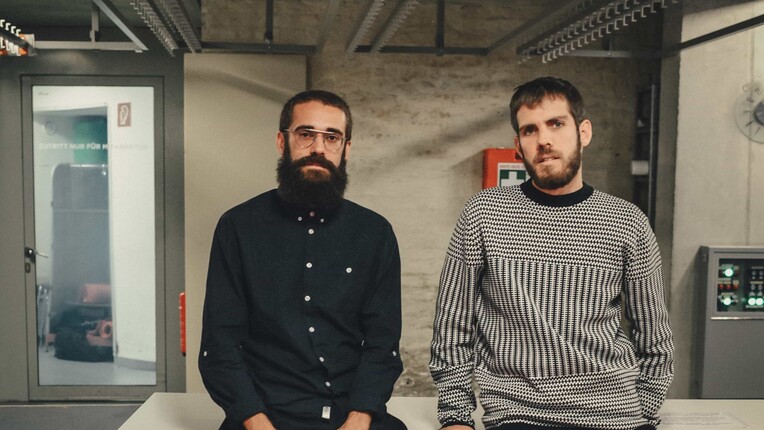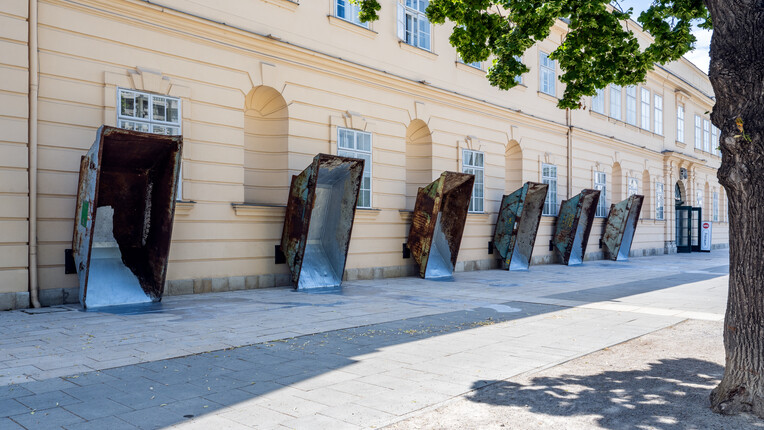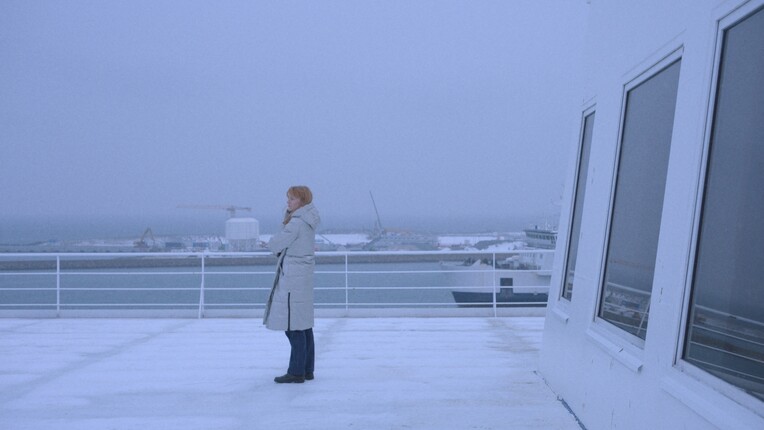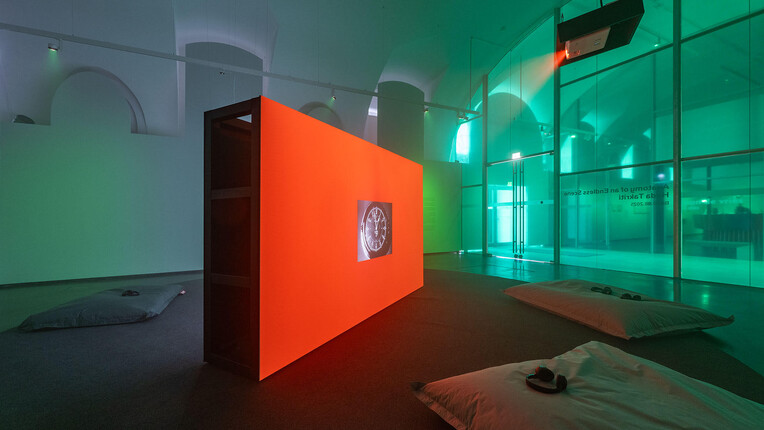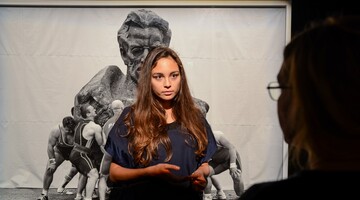
"A woman who levitates obviously levitates above her role."
Daria Khan, curator of the exhibition „Levitate!“ at freiraum Q21 INTERNATIONAL, tells us about the meaning of levitation as a form of protest.
The exhibition „Levitate!“ explores the potential of levitation as the power to overcome gravity and make monuments and people rise, as a form of protest, resistance and liberation. What gave you the idea to curate an exhibition about this phenomenon?
It was a very long process. I was actually researching the subject of sleep. I read a lot and was interested in artworks related to sleep. I was also influenced by Alexei Penzin, the Russian philosopher who writes on the subject of sleep and capitalism. We invited him to come here in November, where he will be part of a symposium. I started to imagine a show about sleep, but I felt that I needed a more focused idea. I had to narrow down my research. One of the hundreds of subjects within sleep was levitation. The concept was then formed a lot by the artworks. To me it was very important to talk to the artists, to think together. Dialogue happened. We selected an artwork together or in some cases, new pieces were made for the show.
In the novel „The Unbearable Lightness of Being”, author Milan Kundera says that vertigo is the desire to fall. We know this feeling, but also the desire to overcome gravity and levitate. It’s logical that this desire aims for something liberating. Human beings can liberate themselves from their lives „down below“ – at least in their imagination. But how is levitation a form of protest and resistance?
That‘s where the Pentagon comes in. In 1967 a group of social activists gathered in front of the Pentagon (US Department of Defense) and tried to elevate it as a form of protest against the war in Vietnam. That inspired me to also consider levitation as a form of protest. Another thing is the image of a levitating woman, which was very important for me, because a woman who levitates obviously levitates above her role. It is always about protest. The context of the Pentagon is political and wide. The other one has a domestic and feminist – and therefore also political – context.
How can this form of protest in art be used or transferred into the „real world“ outside the exhibition space?
I think that’s what most of the artworks in the exhibition actually inquire. And that’s profoundly what any exhibition is about. It’s about the potential of art to change things, to move things. That’s what art has always been testing throughout history. Through the metaphor of levitation, I’m trying to understand and get answers from artists. Can we move things? Can this protest happen?

the spectacle of resistance in Christian Jankowski’s (GER) series of photographs “Heavy Weight history,” 2014
But how can we overcome the boundaries between an art space and the problems outside? I’m not sure who decides what is political and relevant today, but I do notice a voice in the art scene getting louder again. This voice demands art to be „political“ and „relevant“ - whatever that means. How do you deal with this demand?
It would be too romanticising to say that art has the power to get out of the exhibition realm and change things outside. But I think it can… it can make people think. You can find artworks here which refer to certain events that are happening today, although they were created years ago. Astrid [Menze], for instance. She made her work in 2010. She collected photographs of domestic spaces – houses and homes, which people put online voluntarily. When we look at these images in the 25 minute loop, we realize that all these images talk about a specific class. The bourgeoisie don’t put photos of their domestic spaces online. The work is about the loss of a sense of property and ownership as well as the feeling of displacement. This has a cruel connection to what is happening with refugees today. The artwork acquires a new meaning and can be read through these current problems. It’s up to the public to read it and think about it.

the loss of a sense of property and ownership in the video by Astrid Menze

Kristof Kintera’s (CZE) “Weightlessness,” 2013, shows a pair of empty socks standing on a flying carpet.
Another way to protest against something or to deal with the cruelties of the world is humour. There are a couple of pieces in the exhibition that are quite humorous. What does humour in art mean to you?
Sometimes reality becomes unbearable to such an extent, so inhuman and violent, that people try to find an approach to handle it and to live with it. In this context, Italo Calvino and his concept of lightness are very interesting: lightness as an attitude towards reality. He is questioning the relation between art and reality, how art is supposed to deal with reality and what its actual purpose is. He proposes to filter reality into a powder-like substance. He says that lightness is something that prevents the world from crushing us. It’s an attitude to resist reality. Besides, the humour here is not only humour but also irony and sarcasm. Sometimes it’s very bitter.
Abracadabra, for instance. I look at it and it seems quite funny. However, the idea of protest only leading to change when there is magic involved, is truly sad.
Yes. Also think of politicians as magicians who are manipulating everything. The work questions the whole idea of protest as an activity – if it’s actually people who decide to protest or if they are manipulated to do so.
There is no scientific proof that it has ever been possible for anyone to levitate. There are people who claim to have levitated, though. What do you say to a man or woman who tells you „I levitated!“
I really appreciate when people have the freedom to think whatever they like to think and to do whatever they like to do. I would just appreciate them sharing it with me, I guess.
Interview: Margit Mössmer
